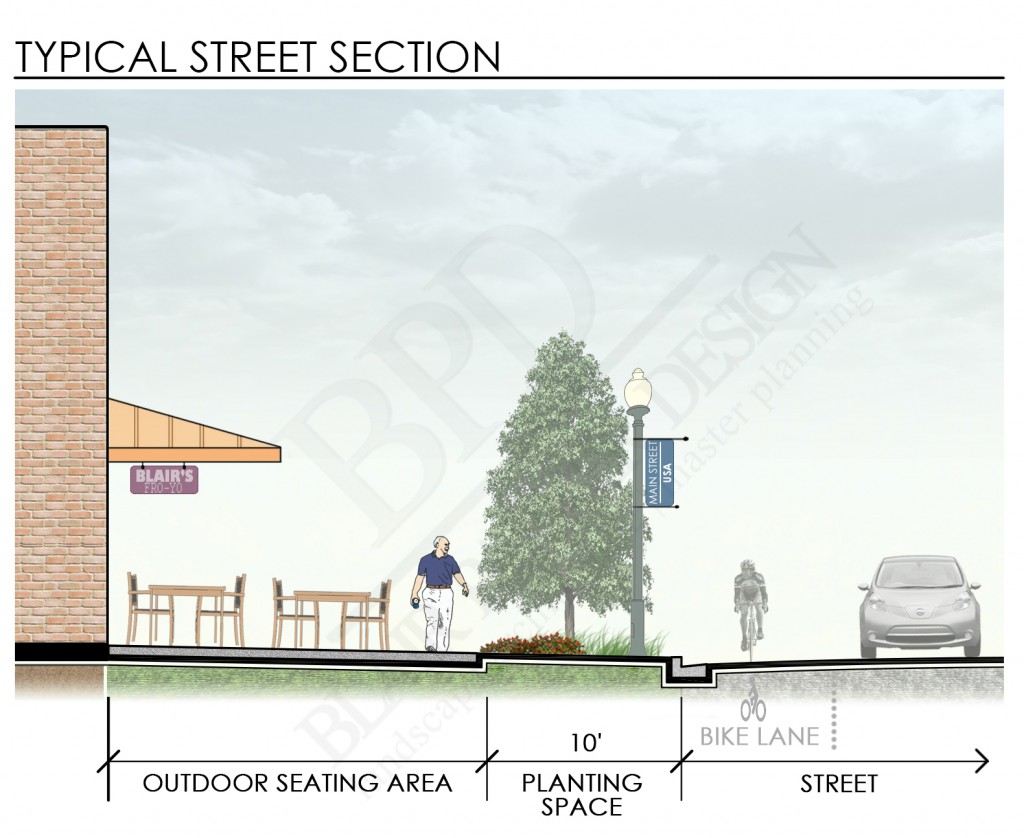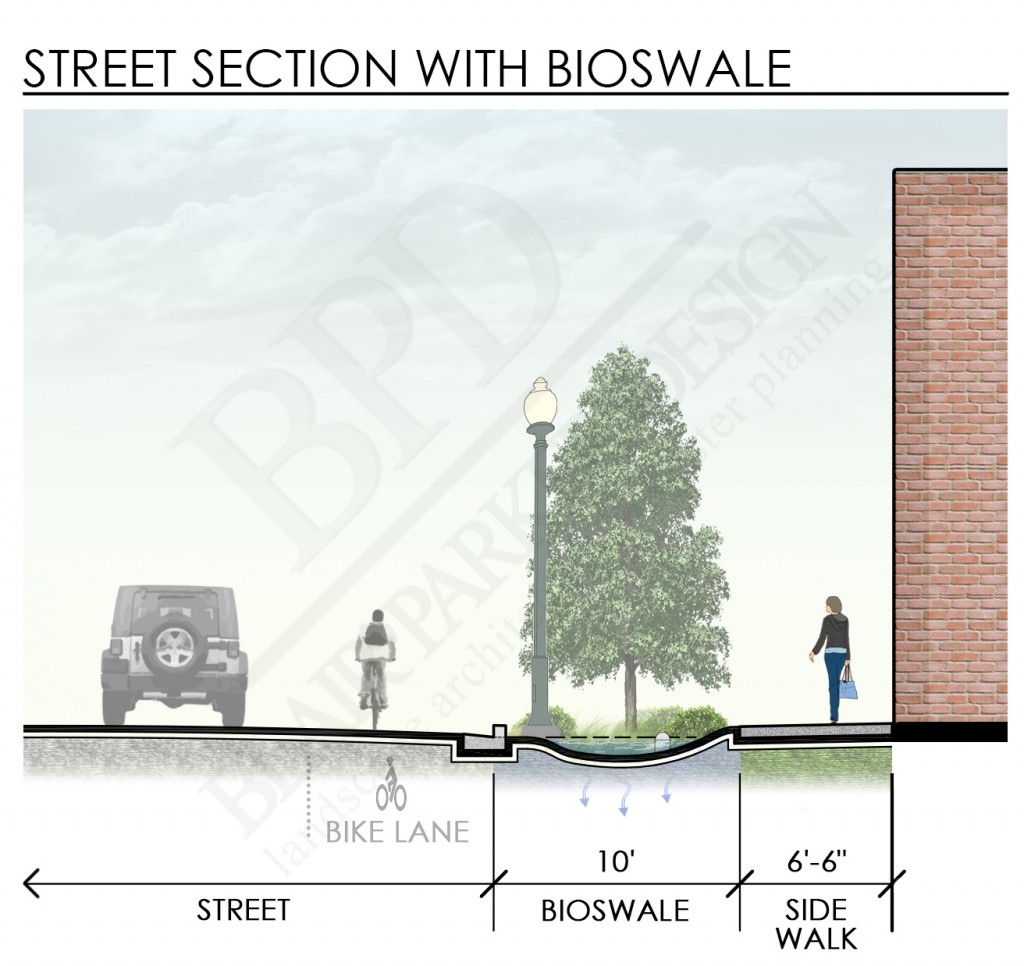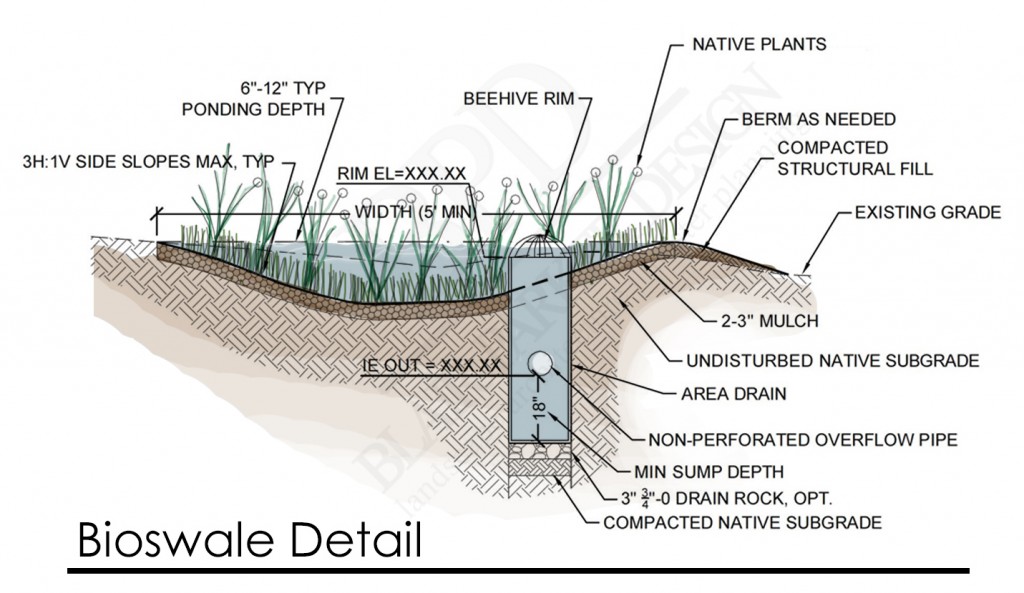Landscape Architects are stewards of the environment, we are designers educated to create special places, to disturb nature as little as possible and to restore the environment where needed. The current buzzword “Sustainable” is well overused but accurately describes the core of our profession. Often teaming with engineers, planners and architects we achieve realistic results that work and fit budgets. We also provide a very environmentally friendly solution to human interaction with the land and other forms of life. The purpose of this statement is to address questions and comments that we sometimes receive.
The design process at BLAIR PARKER DESIGN (BPD) is simple and adds a touch of realism to an often times philosophic discussion. It is important to understand the zoning, building and engineering requirements of a community. It is also imperative to understand the storm water beliefs of the community, client, and engineering team members.
BPD believes our public streets are often too wide and traffic calming used too little. Pedestrian and bicycle interaction appears as an afterthought. Building larger vehicular arteries is not always the answer, especially when the long term effects suggest global warming and damage to the earth’s ozone. When initiating a design project, we contour our sites to retain the natural components; we preserve native vegetation and supplement it in the disturbed areas. Where possible, our impervious roads should be reduced and pedestrian and bicycle corridors given greater importance.
A focus on health and a more green approach to the built environment is desirable. Our society now expects space for outdoor gatherings, opportunities for exercise and community activities. Community leaders now reinforce this resurgence of environmental consciousness and with that, the landscape architects of Blair Parker Design keep focus on sustainability.
Below you will find a series of details and sections that illustrate BPD’s approach. They do not speak to all scenarios; that is why an organized design team is needed. Our illustrations suggest the use of larger greenspace in the standard street cross-section with trees that at full size, fit the area. BPD uses native plant material and other naturalized plantings to reduce maintenance and water needs; which is critical in lessening the growing
strain on our infrastructure.

A more comprehensive stormwater management approach that includes Low Impact Development (LID) components is needed to reduce the volume, velocity, and pollutants that enter our waterways. The use of bioswales in parking lots and along public roads is desirable for long term storm water management. The same is true on private sites for containing our rain water by using rain gardens and rain water harvesting systems in commercial and residential settings. These systems not only reduce runoffs and help filter out pollutants but can supplement irrigation needs to reduce the use of potable water. In addition to the benefits listed above, these stormwater systems, often times are less expensive than conventional practices and increase habitats for birds, and other wildlife. Bioswales, rain gardens, green roofs, permeable pavers, rain cisterns, and other designed systems together help to manage our regional storm water plan.
Check out last month’s post for more information on LID and infiltration planters!
